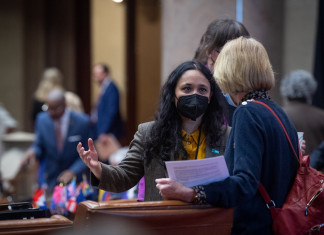The Community Garden in Red Hook is no more.
Two weeks ago, after numerous complaints from locals about its ragged appearance, landlord Todd Baright of Baright Realty closed the garden, which was on Route 9 next to Hardscrabble Plaza.
“By the spring, it really looked awful with the banner flapping around all torn, some of the fences were pushed down,” Baright told the Observer.
After hearing many complaints from the public, including local government officials, Baright asked garden founder Joe Baldwin to clean up the site and dismantle it.
The fencing, art work and marked boundaries for the dwindling number of plots were all swiftly removed from the 9-acre garden, which had operated for five years.
“I can’t blame Todd,” Baldwin, who works with Earth to Table, told the Observer. “He let us use the land free to help out the community, but once the Bard Farm Project (a student-run 1.5 acre farm located behind the historic manor house on the college campus) started two years ago, I lost most of my helpers and wasn’t able to give it my full attention.”
Baldwin, 61, is based in Pleasant Valley and runs community gardens in the southern Dutchess area through Earth to Table which is a component of the Community Foundations of the Hudson Valley. He opened the Red Hook branch in May 2008, hoping to give his son’s restaurant, Rusty’s, a place to grow fresh produce.
But Baldwin said he had a tough go of it. Irrigating his crops became a problem when the village wouldn’t allow him to hook up to their system and use the water for free.
“We totally supported a community garden and wanted it at the [town] Rec Park, but it got no interest with Red Hook residents,” Village Mayor Ed Blundell told the Observer. “When [Joe] expected the village to donate water, I couldn’t do it. It’s not my water.”
Baldwin said he was able to get some water from M&T Bank next door, however. But, he added, there was another problem: “The woodchucks were huge.”
Amber Hawkinson, a local artist, gardened at the spot for the last three seasons, growing flowers and vegetables. Hawkinson said the garden consisted of a few small bricked flower gardens, some raised beds, a shed for tools and a place for composting, with the rest of the space free for residents to use as they wished. “I am hoping to organize a new [community garden] somewhere else,” she said, but she doesn’t know where yet. “Ideally, a community garden should be somewhere easily accessible, like a park,” she added.
Baldwin is philosophical about the garden’s demise. “The first couple of years we did well, but I’m only one person and I did incredible work there, but nobody was behind it,” he said.







Facebook Comments